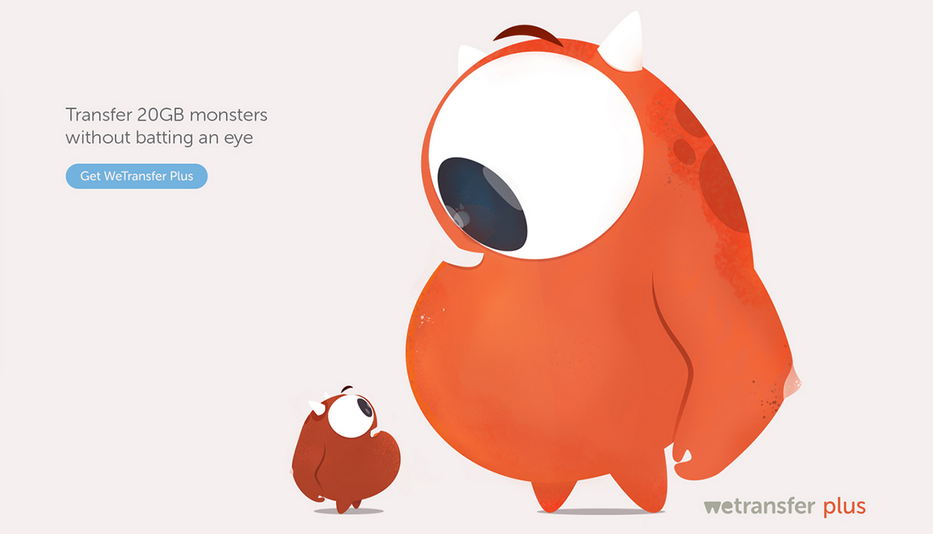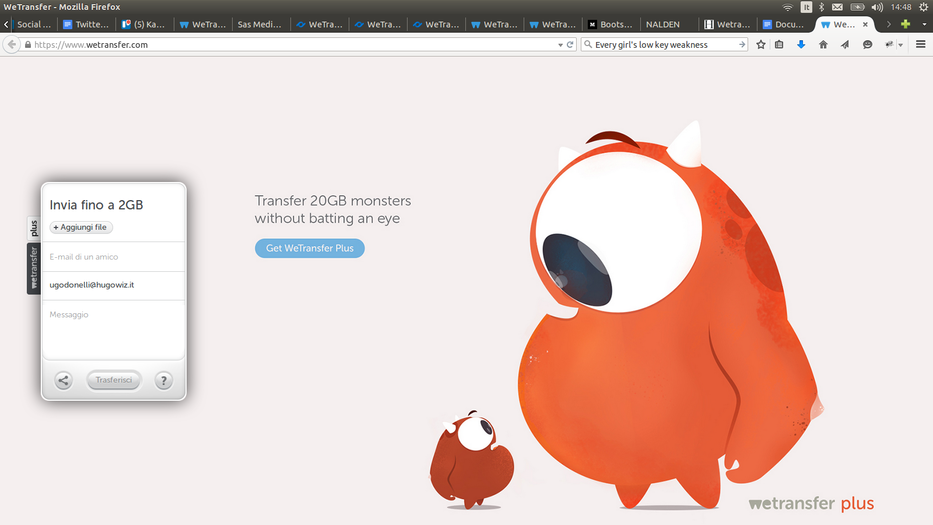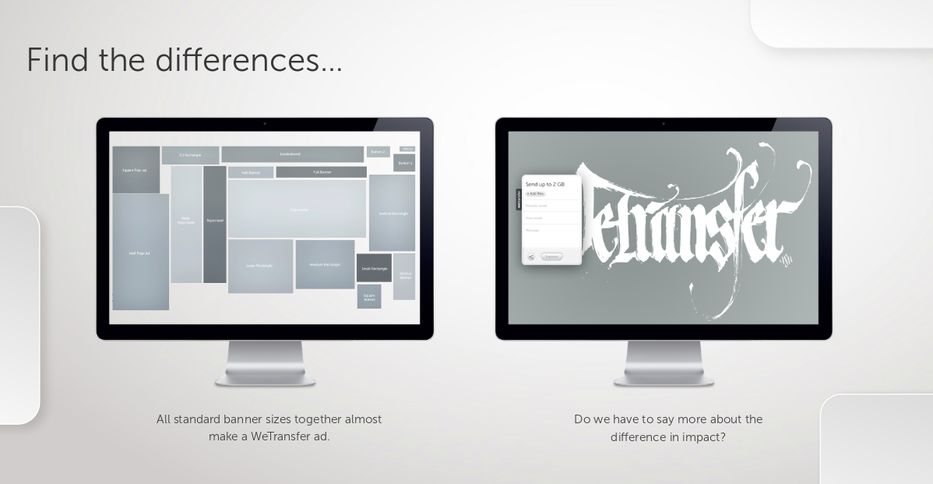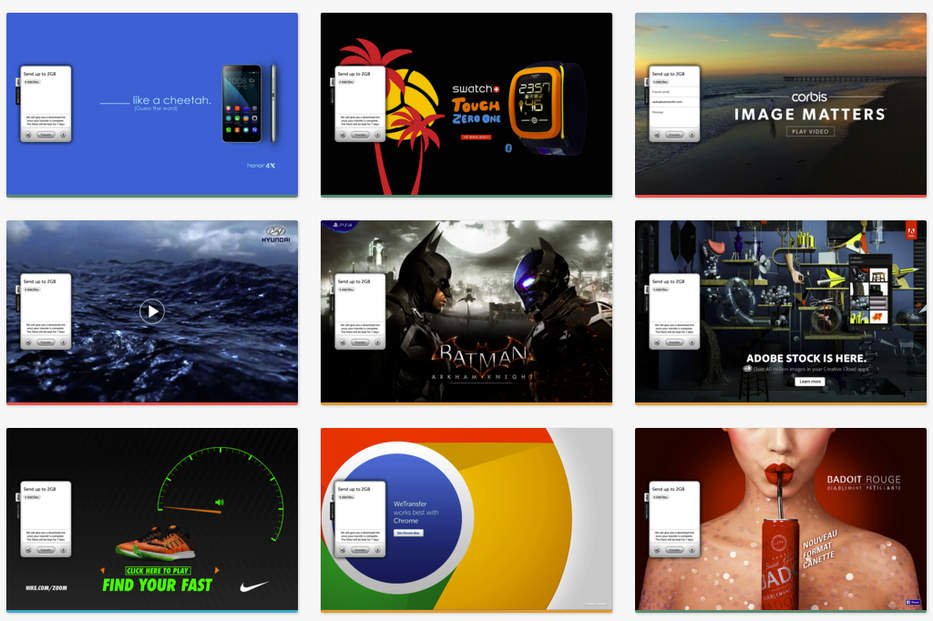Why we love WeTransfer
How a startup could successully bootstrap and become a leading player in the file transfer market.
Published on

Everyone knows WeTransfer as a friendly cloud-based file-sharing service, and as a great startup. But after Googling around a little bit, I actually couldn’t find one good article about it. So I decided to write one.
Why should you care about the WeTransfer story? Because it’s an excellent example of how to successfully start a new business, bootstrap it, get it profitable, and fuel rapid growth. We can draw quite a few lessons from analyzing WeTransfer as an innovative service and as a great business model.
In this article, I am going to explore WeTransfer by first traveling through the service as a user (taking the customer journey) and then we will analyze it from 4 different innovation perspectives (The 4 lenses of innovation®), and finally we will draw some conclusions.
Introduction
WeTransfer was founded in 2009 by Bas Beerens, Nalden and Rinke Visser in the Netherlands.
The company and the service purpose is to help people send large, GigaByte-size files, such as movies, pictures, or music.
Today, WeTransfer has more than 30 million unique users per month, and this user base is growing at a steady clip. The service received funding of $25 million from Highland Capital Partners in February 2015.
"We love what we do and we think it shows."
WeTransfer has a clear mission: "We like to keep things simple. And so we transfer your files from A to B. Free of stress and of charge." It’s worth noting how clear and understandable their mission is. It immediately states what's in it for you: you get your files transferred for free without any stress.
Ah, and they stick to that.
Here is a snapshot of their service page.

Let’s all get on the same page by doing a customer journey.
The first thing the user sees when landing on the home page is an advertisement for the company’s paid service WeTransfer Plus. By skipping this ad the user is already on the service page. She has to accept the terms of service and the privacy policy.
Let’s imagine our user wants to check the legal stuff: she clicks on the link to try to understand what she is accepting. She lands on a friendly and entertaining page where she finds the links to the legal documents. Since she is here, she wants to read the terms of service and opens the “Terms of service” file. She finds out that the document is written in two columns: one in “legal speak” and the other in friendly and entertaining “simple speak”.
Here are some examples of what she finds:
- “We treat your stuff with respect. We don’t let anyone search for anything on the website, and we only check transfers if you send us a support request.”
- “Be excellent to each other, don’t transfer illegal stuff or stuff that isn’t yours.”
- “We do our best to make WeTransfer tick real smooth. If anything goes wrong, we’ll run as fast as Usain Bolt to fix it.”
If you want you can find the legal documents here: https://www.wetransfer.com/legal
Ok, now our user is satisfied (and entertained) and is ready to accept the terms (otherwise we won’t be able to continue the journey. Thank you, user!).
Let’s suppose she wants to send some pictures to her mother, so she clicks the “add file” button and loads the pictures. She inputs her mother’s email and her own email address and she is ready to send her files.
While the files are loading, the interface shows a progress wheel and the background changes regularly, showing beautiful illustrations, photos and advertising.
Once the process is completed, she will receive an email stating that the file was sent. Her mother will receive an email with a download button that will take her to We Transfer. A progress wheel and a changing background with illustrations and advertising welcomes her.
Interesting insights!
Ok, now we will look at WeTransfer through Rowan Gibson’s “4 lenses of Innovation” to see if we find something interesting (and we will!).
Understanding Needs
Let’s start with the “Understanding Needs” lens.
What is truly remarkable is that our user did not have to register for the service! Normally, free services trade whatever they are offering for free in exchange for the user’s time needed to fill in forms and thinking of a password they will remember the next time they will use the service.
Not registering is valuable for the user and serves the “free of stress” part of the company’s mission statement. The only data needed to provide the service are the files, the recipient’s address and the sender’s address. That’s it. No extra work or time – or stress – for the user.
Moreover, the service is totally vertical. The purpose is to transfer files from A to B. It is not about backup; it is not about sharing; it is not about storage. After a few days the files will be deleted and no longer available. In other words, WeTransfer is addressing just one specific user need and they want to do it better and less stressful for the user than anyone else.
Here is where the confirmation email fits in: the user wants to know that the files reached their destination safely and were downloaded.
Another great insight around “Understanding Needs” is that humans want to see progress but they also get bored. Ah, and humans value beauty.
Uploading 2GB of files can take quite a time. The user wants to check how it is going from time to time and WeTransfer provides a gratifying experience with not just the progress wheel but the changing display of beautiful backgrounds – each one appearing for 45 seconds alongside advertising.
Leveraging Resources
Now let’s look at WeTransfer through the “Leveraging Resources” lens.
Here we will examine the most important resource that enables new ways of creating value for users and customers: pixel space. If we look at the service interface we notice that most of the pixels are occupied by the background. The user interface is small and out of the way at the left of the screen.
It’s the exact opposite of any other web service. Here the user interface is where the other services place their advertising! Even a minimalist user interface like Google search is placed right in the center of the user screen.
The pixel real estate is leveraged for pleasing the user with beautiful content and for pleasing the advertisers with a big dedicated space that can be leveraged to move their target. According to WeTransfer, the big size of their advertising format performs way better than any other. I believe them: that’s why I prefer watching movies in a theater rather than on my smartphone: I’m much more involved if the screen is big.

Challenging Orthodoxies
Next, let’s look at WeTransfer through the “Challenging Orthodoxies” lens and see what we can see (In fact, both of the above examples are also illustrations of challenging common ways of doing things, as I will explain below).
Let’s return to the matter of pixel real estate. WeTransfer’s advertising format challenges the status quo. The most popular digital advertising format is the medium rectangle: 300x250 pixels.
All those banner formats are placed in web pages and each displays a different brand or product. The web page is cluttered with conflicting messages all trying to attract the user’s attention and that distract the user from the content she came to see in the first place. By contrast, WeTransfer’s advertising format is the content and it is used to entertain the user while she is waiting for her file to upload. Clever!
Even the meaning of advertising is transformed from distraction into entertainment. They are leveraging the user’s waiting time.
We can also see the absence of registration as a challenge to industry orthodoxy. The orthodoxy states that if you don’t own the user, by assigning her an ID and a password, then you will lose her. Oh, really? This is what we read in WeTransfer’s Media Kit: “We have a great customer loyalty and advocacy that caused fantastic growth.”

Harnessing Trends
The last lens we want to look through is “Harnessing Trends”.
Obviously, one of the major trends today is file-sharing – and those files are getting larger and larger as our media needs evolve to include videos and TV shows, full-length movies, large amounts of high-resolution digital pictures, music files, as well as business documents such as large Powerpoints presentations or PDFs.
WeTransfer is right there when we need it – providing us with a friendly, reliable, enjoyable and stress-free way to send our files from A to B.
Another trend is the rapid growth of online advertising. Today’s advertisers are looking for ways to create meaningful online media connections with their audiences, but small banner ads on Google or other sites do not give advertisers the opportunity to stand out in a differentiated and memorable way – as they have traditionally done in offline media such as magazine advertising or billboards. WeTransfer’s large advertising space provides a way for advertisers to reach their audiences online in a format that is more effective and more coherent with their brand image.
Business Model
Let's put all toghether and summarize WeTransfer Business Model.
The Business Model is a blend of the "Multisided" and a "Freemium" patterns.
It targets two main customer segments: file transfer service users and advertisers. The file transfer users can be both free and paying users who receive different service levels.
WeTransfer serves the free user with outstanding service experience and limited transfer. On the other hand, paying customers can enjoy premium service level. For advertisers, WeTransfer offers a digital billboard targeted ads. The offer is monetized by selling premium subscriptions and selling adv real estate. We transfer partners with indie artists to offer a beautiful and unique experience.
Here is the Business Model drawn on the Business Model Canvas:

Conclusions
Together, we have analysed a great company, offering a great service we all love.
Using the perspectives of “The 4 lenses of Innovation” we have been able to unpack what’s so special about WeTransfer. We can see how they approach what could easily be just a generic service in an altogether meaningful and differentiated way:
- They value the user’s time by saving her registration steps and transforming her boring waiting time into entertainment time.
- They serve the user by committing to their focused and bold mission: being the best and least stressful free transfer service in the world.
- They please their customers - and their advertisers - by offering a billboard-size advertising format. A unique offer in the digital advertising industry.
- The growing file sharing trend assures that their service will still be relevant in the future.
We can unpack our own businesses in the same way, too.
We can look at our products and services through different perspectives and find out how to make them more relevant and valuable to customers – using the resources we already have – and how to differentiate our offerings from the competition in ways that are not just highly relevant for today’s customers but also positioned to take advantage of future trends.
Links
WeTransfer home page: https://wetransfer.com/
WeTransfer advertise page where you can download their beautiful media kit: https://ideas.bywetransfer.com/category/advertising
The 4 lenses of innovation page where you can download a free sample chapter http://www.4lenses.it/en/
 Hugowiz
Hugowiz